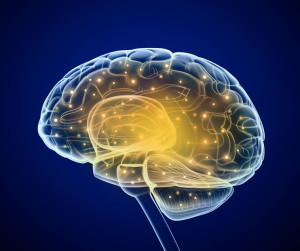
Contributor: Cross Creek Hospital clinical team member Kathryn Taylor, MA, LPC/MHSP
Most teachers and qualified educators are required to learn a few things about substance abuse pre-vention during college.
This basic information is important, but many teachers find themselves faced with questionable situations involving students that were not always explained in textbooks. It can often be unclear if a student is abusing drugs or alcohol or if a situation does not warrant concern.
Whether you are a public school teacher who must keep testing scores on level or a college professor working toward tenure, there are dual pressures at stake: The need to help students excel academically, and the deeper human concern for the young people in each classroom.
By taking a look at substance abuse and psychology as a whole, many teachers become adept at identifying student needs and finding ways to help in various situations.
 It’s important to note that the prefrontal cortex of the brain is not fully formed until around age 25. [1] This important part of the brain is located at the very front of the brain, and is well-known as the logic center of the brain.
It’s important to note that the prefrontal cortex of the brain is not fully formed until around age 25. [1] This important part of the brain is located at the very front of the brain, and is well-known as the logic center of the brain.
Most students are under the age of 25, so this makes them more likely to act more impulsively, make illogical decisions, and operate through emotional instincts more than logical decisions.
This lack of prefrontal cortex development may sometimes cause young people to engage in substance abuse, whereas an older person would be more wary of the potential consequences.
Physical Symptoms of Students
Physical symptoms related to substance abuse among young people can vary. Because most young people enjoy robust physical health, substance use does not always take an immediate toll. However, changes in grooming and appearance may indicate a problem.
Rapid weight loss or gain, loss of hair or teeth, or lesions on skin are all signs of substance abuse. Many substances cause cognitive difficulties and may even cause long-lasting brain damage.
It is important to feel comfortable approaching your students if you are concerned. If you are not comfortable asking a student about these behavioral issues, speak with your supervisor and enlist the help of other professionals.
Behavioral Symptoms of Substance Abuse
Some behavioral symptoms of substance abuse that may stand out include [2, 3]:
- Hyperactive behavior, including racing speech or thoughts
- Incomplete or missing assignments
- Violent or angry behavior that is unsafe or unreasonable
- Unreasonable sleepiness or irritability
- Strange body odor, smoky smell, or burning smell
- Decreased motivation and decreases in academic performance
- Disappearances from class, tardiness, or excess absences
- Loud or inappropriate classroom behavior
- Increase in bullying or harassing other students or teachers
- Disregard of other people in the classroom
- Change in personal appearance
- Shaking hands or, in more extreme cases, seizures
- Bragging or discussing substance use with other students
While college-age students often experiment with drugs, they are not the only ones. Drug experimentation can begin well before college. However, there are some unique risks when youth under the age of 18 experiment with substances.
For instance, the younger a person is when he or she first abuses alcohol, the more likely he or she will be to develop alcohol addiction later in life. Also, younger drinkers are able to stay awake longer than older drinkers, making them more susceptible to drinking dangerous amounts of alcohol.
Students who become physically inebriated to the point of passing out or who brag about blacking out are already in the danger zone.
Teen smokers are more likely to become dependent on cigarettes after the first try or experience adverse effects of smoking such as heart irregularities or depression.
 The younger your students are, the more likely it is that an isolated substance abuse incident may indicate a deeper problem. [2] In fact, almost any harmful substance can impact a student’s brain development and lead to long-lasting consequences.
The younger your students are, the more likely it is that an isolated substance abuse incident may indicate a deeper problem. [2] In fact, almost any harmful substance can impact a student’s brain development and lead to long-lasting consequences.
If you are concerned about a student who is abusing substances, the best place to start is within your school. Find out what school policy is on substance use, and work with your principal or school support staff to contact parents or emergency contacts as needed.
Communication is Important
Communication is a good first step, because many adolescents or young adults experience physical illnesses that may appear like substance abuse issues. For instance, ulcerative colitis or Crohn’s disease may cause rapid weight loss, hair loss, difficulty in concentration or frequent absences. [4]
Many other childhood or young-adult onset illnesses can also mirror substance abuse symptoms.
It is a good idea to learn more about addiction treatment options for young people so that, if need-ed, you may offer support or a number of resources to the student and his or her family.
Because social stigmas still exist about substance abuse, you may need to advocate for the student to receive vital healthcare support, a medically-supervised detoxification program, or an evidence-based approach to wellness.
In some cases, teachers can be a vital resource for family health education. In the end, it will be up to the student and/or his family to make the final decision. With the right knowledge and resources, you will know that you did your very best within your role to help each student who enters your classroom.
References:
1. Holloway, B., Roux, S. (nd.) Understanding the Teen Brain. Retrieved 1/22/2016 from https://www.urmc.rochester.edu/encyclopedia/content.aspx?ContentTypeID=1&ContentID=3051.
2. Is Your Teen Using? Signs and Symptoms of Substance Abuse. Retrieved 1/22/2016 from http://www.drugfree.org/resources/is-your-teen-using-signs-and-symptoms-of-substance-abuse/
3. McNeely, C. Blanchard, J. (2010). Center for Adolescent Health at Johns Hopkins Bloomberg School of Public Health. Effects of Tobacco, Alcohol and Drugs on the Developing Adolescent Brain. Retrieved 1/22/2016 from http://www.jhsph.edu/research/centers-and-institutes/center-for-adolescent-health/_includes/_pre-redesign/Effects_of_Drugs_Standalone.pdf.
4. Pediatric IBD Foundation. Ulcerative Colitis. (2011.) Retrieved 1/22/2016 from http://www.pedsibd.org/teens/tibd-UC.html.
Contributed by Cross Creek Hospital clinical team member Kathryn Taylor, MA, LPC/MHSP.
About the site: Located in Austin, Texas, Cross Creek Hospital is an inpatient treatment center that provides comprehensive care for adolescents, adults, and senior adults who are struggling with mental, emotional, and/or behavioral concerns. Treatment at Cross Creek Hospital is an intensive and highly personalized experience, with multidisciplinary teams of experienced professionals employing a variety of treatment modalities, including cognitive-behavioral therapy, didactic therapy, and multiple experiential therapies, to best meet the unique needs of each person who is entrusted into our care.
The opinions and views of our guest contributors are shared to provide a broad perspective of addictions. These are not necessarily the views of Addiction Hope, but an effort to offer a discussion of various issues by different concerned individuals.
We at Addiction Hope understand that addictions result from multiple physical, emotional, environmental, and genetic factors. If you or a loved one are suffering from an addiction, please know that there is hope for you, and seek immediate professional help.
Published on June 3, 2016
Reviewed and Updated by Jacquelyn Ekern, MS, LPC on January 4, 2021
Published on AddictionHope.com
